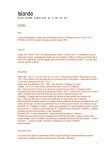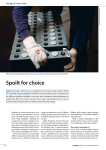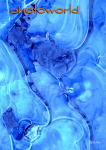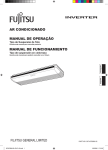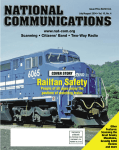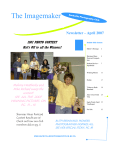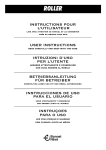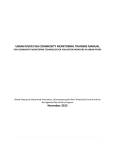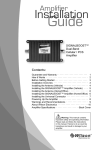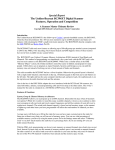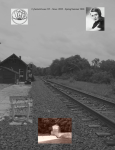Download The Pine Tree Journal #3
Transcript
Experiments in 2.4 GHZ. Reception Most hackers are familiar with the 2.4 GHz. ISM band, as most 802.11 WiFi hardware operates in its frequency range. Wifi systems are not the focus of this article however since there is an abundance of material on the topic of wardriving and other forms of WiFi hacking. In addition to Wifi hardware, the band is also home to a wide variety of cordless phones, wireless video (Wavecom) devices, microwave ovens, and other Part 15 and [need FCC section number for ISM regs] devices. Part of the 2.4 GHz. ISM/Part 15 band is also allocated for Amateur Radio use, and you could conceivably find any type of amateur radio mode being used there from CW to ATV. Both Icom and AOR have receivers that have frequency range up into the 2.4 GHz. region. The Icom R20, R1500, AOR receivers go up to 3+ GHz. There is also consumer electronics equipment operating on this band that can be used for monitoring purposes, specifically the Wavecom wireless video systems. Many electronic interception types use a modified Wavecom receiver for monitoring 2.4 GHz. wireless cameras. This set-up can also be used to detect other 2.4 GHz. devices. In figure 1 we have a picture of the set-up we used for this article. It consists of a Radio Shack-branded Wavecom receiver that has been modified by replacing the stock antenna with a pigtail of LMR100 with a female SMA connector on the end. By removing the case, one can trace the coax lead of the stock antenna to an RF shield enclosure. This enclose can be desoldered gaining access to the end of the coax which can then also be desoldered and replaced with the LMR100 pigtail. The TV is an el-cheapo $20 B&W portable picked up a few years ago at a local department store. It was chosen because of its inexpensive price, 12V DC power requirement, NTSC video input capability, and usability for other electronic interception projects. While this video display offers adequate performance for the price, a better option given modern technology would be one of the LCD color video monitors available from a number of sources for about $100. The entire system is capable of running on 12V DC, such as that provided by a vehicle cigarette lighter jack. The box to the left is a (now discontinued) Radio Shack portable power source used to provide power for the experiment. The antenna, further detailed in figure 2, is a 900-2600 MHz. PCB log periodic made by KB5UBE and available via Ebay. It was mounted on a piece of scrap molding left over from a home improvement project. For this experiment, the system was installed on the passenger seat of a car, with the antenna cable2 tied to the passenger side visor. This allowed rudimentary aiming of the antenna either directly forward, or out the passenger side window (figure 3). It should be noted that the log periodic offers higher gain and better reception range, but is also very directional. We choose the PCB log periodic because of its reasonable price, high gain, and wide frequency coverage as opposed to your standard 2.4 GHz. band antennas. A beginner may instead want to initially opt for a 5 or 8db gain omnidirectional antenna such as the Aerialix "black sticks". Since the setup used in this article was assembled, there have been a few developments in product availability. Both Wal-Mart and BJ's Wholesale Club sell 2.4 GHz. wireless security camera systems for ~$80. The system consists of a wireless camera and a 4-channel receiver. While no mods or hacks have been released yet, there are a couple advantages to this system over the traditional Wavecom unit. The first is that the receiver comes outfitted with an antenna connector. (The unit comes with a 2.4 GHz. rubber duck antenna.) This eliminates the need to modify the receiver in order to use a better antenna. The second is that one does not have to acquire a camera or other source of video in order to test the system. The Wavecom transmitter unit was equipped with a NTSC video input, and one needed to provide their own video source. With the Wal-Mart/BJs unit one needs only to plug a 9V battery into the wireless camera. While Wavecom-branded units appear to have become more difficult to acquire, Radio Shack still sells one under their brand. Retail cost for a full system is $100, and a receiver can be purchased separately for $60. The catalog number is 15-2752. Another development is the decrease in cost of LCD video monitors. Several manufacturers now offer them as a battery operated DVD player (with video input) for under $100. This presents a more compact package than the portable B&W TV. We recently however noticed portable B&W TV/video monitors of a model very similar to ours selling for $14 at a local odd lot/big lot store. Those old-school 83 channel analog slide-tuned TVs have certain useful features that we'll discuss in a future article, so you might want to pick one up anyway. The obvious signal mode to intercepted by this set-up is the ubiquitous Wavecom systems used to send a video signal from a VCR or satellite receiver to another TV in a residence. These normally have about a 300 foot range from unit to unit. Using the log periodic antenna, successful interceptions have been made from as far as [insert distance]. Other 2.4 GHz. devices can also be detected, such as 802.11 Wifi networks, and cordless phones. While the preferred mode of detecting WiFi is with a Laptop PC and Wardriving Software, you will notice a brightening of the "snow" on your monitor screen and a popping noise on the speaker when detecting one with this set-up. The cordless phone experiments were done with an Oregon Scientific "Digital 2.4" cordless 3 phone, FCC ID KT5-TW339, purchased for $10 at a local big/odd lot store. While one cannot hear the audio from a digital cordless phone, their presence is quite noticeable as a bar going horizontally across the video screen as seen in the figure 3. There was also a periodic beep heard on the speaker. When the phone was brought off hook, multiple horizontal bars appeared on the screen, as shown in figure 4. It should be noted that Scanning USA magazine featured an article by Steve Donnell a few years ago. It detailed using the Wavecom receiver as a down-converter by tapping the receiver's IF output and feeding it to a communications receiver for monitoring narrow band RF signals in the 2.4 GHz. band. The 2.4 GHz. ISM band is experiencing an explosion of activity, and will be one of the hot RF spots in the future. In addition to 802.11 Wifi networks, it is host to RFID, AVI, wireless video, and a number of consumer electronics devices. The band is also popular with surveillance devices ranging from covert camera systems to modified cordless phones used for wiretapping. The set-up described in this article is the same recommended and used by many TSCM (Technical Surveillance Countermeasures) professionals. The capability now exists for technological hobbyists to get in on exploring this part of the spectrum for very little money and some elbow grease. The set-up we described is a very basic one built from off-the-shelf components that offers tremendous capability and room for experimentation. Those readers who have experimented with Wardriving now have the opportunity to see what else the 2.4 GHz. band has to offer, and get a broader taste of the field of electronic interception. Links: http://www.ringolake.com/pic_proj/wavecom/wavecom_rx.html http://www.ipass.net/teara/atv4.html http://cascanning.tripod.com/24gig/ http://pages.prodigy.net/dsudduth/wavecom.htm 4 Hannibal's Big Ass Solar Battery Thing And How it Came to Be Well, as you may know, I am in the SCA, and consequently we do a lot of camping. But I also have sleep apnea, so camping at unimproved locations can be a bit of a challenge, since I need power for my CPAP machine in order to get any kind of truly restful sleep. As I'm also a bit of the armchair survivalist, I'm always interested in projects to enhance our self-reliance. As I read articles on alternative energy in things like Backwoods Home magazine (I've subscribed for over 15 years), I figured some kind of portable battery power system with solar panels for recharging the batteries would be just the thing for camping, in addition to being useful in an emergency situation. I tried to make a little one with a Wal-Mart marine battery and two 10W solar panels I got for cheep on e-bay, but this just didn't do the trick. Even so, I might put some photos of it up here later. I wanted something bigger, but the money for this just wasn't in the budget. As it happens, you may know that Lady G had some surgery in the fall of 2005. The insurance expert at the surgery clinic said we needed to pony up about $3000 in non-covered expenses. Fine, I says, and proceed to have $300 a month deducted for my "medical flex savings plan." Boy, was I surprised, when the clinic advised they had miscalculated, and we only owed a few hundred! The deduction of course cannot be changed once set for the year, and I still had well over $2000 in this account. If I do not spend it for bona-fide medical purposes by the fall of 2006, the balance is forefited to the federal government. Great… So in a moment of creative thought, I asked my doctor - a tremendously cool dude - for a prescription worded exactly thus: "Battery and means to recharge battery for CPAP machine", and I went shopping for parts to build Hannibal's Big Ass Solar Battery Thing. Cost thus far is about $1150.00, $900 of which was for the solar panels. How Hannibal built the Big Ass Solar Battery Thing Here is my charge controller. It is a SunSaver-10L with the low voltage disconnect feature manufactured by Morningstar Corporation. I ordered it from Wholesale Solar of Mount Shasta, California for $65.00. 5 And here are my solar panels. Two, count them, two Sharp NE-80EJEA 80 watt polycrystalline solar panels, manufactured by Sharp Solar Systems. Like any electonics product, always stick to the major Japanese brands where possible, you can't go wrong. I purchased these also from Wholesale Solar for $440.00 each. Wholesale Solar lists these as the NE-80E1U, but the only difference is that the NE-80EJEA has a junction box instead of some kind of weird proprietary connector, so this was actually better. Atop the panel is my cat Schrodinger. Here is Weasel Number Seven, helping me test one of the panels. In the original high resolution version of this photo, we can see on the multitester that the panel is putting out about 2.79 volts from the kitchen light fixture. In full sun, the panels are rated to produce over 18V and 4.5A each. Here are my batteries. I had planned to order some Trojan T-105 6V batteries since that's what all the solar power pundits seem to recommend, but my friend L. got me these two salvaged Trojan J185P 12V batteries from a floor scrubber machine at his workplace for free. Apparently their floor scrubber uses a set of three of these bad boys, but one went south on them. The other two were good, but they replaced all three just to be sure. I don't mind, as these batteries go for as much as $250.00 each. They have a 20 hour rating of 195 amp hours each, and they weigh about 110 pounds each. When I tested them, they put out 12.6V which according to the manufacturer indicates a 90% charge. Since these are big bastidges, and full of nasty battery electrolyte, I wanted 6 some kind of thing to enclose them. Also, since this is to be used while we camp at SCA events such as the Lilies War, and also for when I go to Pennsic this summer, it needed to be at least vaguely medieval looking. I figured a wooden chest of some sort was in order, but I needed to build it for strength, as opposed to aesthetics. So I went to Lowes and got me some 2x4 lumber for the frame, some 1/2 inch plywood for the lid and base, and some 1/4 inch plywood for the outside sheathing. What we have here is the box roughly framed out. Now we have the sheathing on. I wanted to use this cheap ass 1/4 inch underlayment to cut down on weight, but this was kind of a mistake. Whatever this brand was, it was soft, splintery, and did not sand well. I cut out the holes and put in three old-work electrical boxes, two for the 12v receptacles, and the third for the solar panel receptacle. I added later a fourth box where I wired in a double switch for disconnecting the receptacles and the solar should it be necessary for some reason. Here is a detail of the outside after I added the 12V receptacles and the Solar Panel receptacle. I got the 12V receptacles from Amazon.com, actually, for $4.95 each. The solar panel receptacle is a P&S Turnlok 125V 15A AC receptacle in the NEMA L515R configuration. I think these are for electric clothes driers or something, I didn't really care, since I just kind of picked them out at random, since they were "locking," and the three way "rounded" blade configuration was substantially different from pretty much anything else, so we would not be plugging things in here by accident. I got these receptacles from 3E, a local industrial electrical supply vendor. 7 Here is a detail of the wiring on the inside. I used some 12 gauge solid wire I had sitting around in the basement from an earlier electrical project to hook everything up.. Here is a detail of how the solar panels were connected. Again note the male and female round bladed "twistlock" connectors. The male end is to plug into the charge controller, or to a second panel's female connector so they can be hooked up in parallel. The cord used here is simply a cut-up 16 gauge outdoor extension cord that I picked up while I was at 3E for $7.95. This shows how the the Trojan J185P 12V batteries are connected in parallel to maintain 12V output. If we had used Trojan T-105 6V batteries as I had originally planned, we'd have had to hook them up in series to get 12V. Before we hooked up the panel I tested the batteries again, as they had sat in the back of my trailer for nearly a fortnight, covered by a piece of cardboard. They indicated 12.5 volts when this photo was taken. Connecting one of the solar panels for the first time. Whoo-hoo! It works! I plugged in my totally manly industrial strength Nextel i355 cell phone with my 12V mobile charger, and it indicates that it is charging. 8 New England Foraging by Rightcoast Connecticut has many wild edibles, both native and non-native. Some are even considered invasive and eradication is encouraged. There are so many edibles in Connecticut and throughout New England, a comprehensive look at them all is beyond the scope of this article. So what I will focus on are varieties that can be gathered in bulk, have a high nutritional value and survival uses. The prominent species that comes to mind is the invasive Japanese Knotweed. Find a riverbank or stream side in Connecticut, or pretty much anywhere in New England, and you will see this plant. Japanese Knotweed You don't want to eat mature knotweed. Where mature specimens are found however, shoots are often nearby and underneath. This goes for nearly all plants, but invasive species in particular. You want to find small shoots between 3 inches and a foot or so tall, harvest them and steam them. They look like asparagus, but have a more bitter taste. They are good, they just don't taste like asparagus. These plants are very common along roadways and in suburban wooded islands. Do not harvest these plants from roadsides or while on job sites or whatever in the suburbs. They are considered a weed and have almost always been treated with broad spectrum control herbicide. They are just darn hard to kill. Along the roadways they thrive where other edible plants can not due to road salt contamination. These are the tasty cockroach of the New England plant world. Do not try to cultivate them, you will almost always fail and have shoots popping up all over the property. Purslane While raspberries, blackberries, elderberries and other berries like it often garner the largest forager following, with good reason seeing as how they are so delicious and they make great jams, jellies and wines. It is hard though to forage for these in quantity. There are abundant amounts of wild edibles right un9 der the noses of New Englanders however, many that they are probably overlooking. Including the super healthy purslane. It is extremely rich in many vitamins, chiefly vitamin C (15% PDV per cup), and is loaded with Omega-3 fat acids. It is one of the only sources of Omega-3 fatty acids from a plant in the continental United States. Eat great, see great and keep heart disease at bay, if the research is accurate on Omega-3 acids. You can find purslane in almost any yard in Connecticut. It grows in turfless areas as a mat, or in a more bushy form in the wild. Pick the whole plant, and remove the greens throwing away the stem just before preparing raw in a salad, or steam them southern style. Toss a handful into your spaghetti for a healthy and flavorful boost. Purslane is also classified as a lawn weed to be targeted for control. Be wary of lawns that may have had broadleaf selective herbicide used, and of areas that may have had broad spectrum herbicide applied like the shoulders of roads. Lamb's Quarters Lamb's Quarters is one of the most common plants in Connecticut stream beds and fields. Another plant that is super rich in nutrition, and easy to get bulk amounts of. The plant can get absolutely huge compared to other foraged edibles, and every part of it is edible though the greens are best eaten while young (under 24 inches). The greens can be pulled off and made in to salad, boiled or steamed. The seeds have a high protein value, making them an ideal survival food. The seeds can be eaten raw as a snack, or dried and crashed into meal. The meal can be made into gruel, or used to make bread, which is exactly what indigenous tribes used it for. I was told during a certification course at URI that Lamb's Quarters is arguably the most nutritious wild edible in New England. The seeds contain more nutritional value than the leaves, but both are rich in many vitamins. One caveat, do not cultivate this plant in the vicinity of a beet crop. It is what is called a host plant for a voracious beet devouring insect called a leafhopper. Queen Anne's Lace (Wild Carrot) Queen Anne's Lace, or Wild Carrot as it is often called is a plant that is edible contrary to its classification as a toxic plant. The plant is toxic in large quantities (I don't know how large, I personally have eaten a salad roughly the volume of volleyball and three roots on the same day). The toxic classification is because of a residual toxicity, like a regular carrot. Nothing 10 serious at all, you know the story of how eating to many carrots give the skin a jaundiced look. In other words, you wouldn't want to live off wild carrot exclusively for a couple months. The only real caution with this edible is that it closely resembles hemlock, which is the poisonous plant that killed Socrates. This is a non-issue for the most part, since they can be told apart easily despite the fact they are extremely similar looking. Crush the plant in your fingers and smell it. Hemlocks and Fools Parsley smell like they will kill you, they're disgusting. Wild Carrot smells just like carrots you buy at the store. Be sure to check that before consuming. Hemlock also grows in swamps for the most part, and Queen Anne's Lace is found in drier soil. It is the forefather, and exact species of the cultivated carrots we know and love. Like the domestic carrot, this is a strictly low altitude plant, growing only south of the Berkshires, and in low valleys north of there. The leaves and tubers are strictly a spring/early summer event. After that they begin to to taste increasingly sour in the case of the greens, and the tuber turns to a wood root. The plant has a red dot in the center of the white, lace-like umbelluate while young, and this is a good sign of a tasty carrot below. After early to mid-summer, the leaves can of course still be eaten, and the flower itself is a tasty treat, though best cooked to give it better flavor. In a non survival situation, a little beer and corn meal batter dipping and toss it into some oil and you have a fantastic snack. The plant is amazing medicinally. Take a few ounces, dry it up and save it for tea. Boil an ounce of the dried leaf in a cup of water, and you have natures Pepto Bismol. Works well for indigestion, heartburn and diarrhea among pretty much any other gut ailment. It's other legendary medicinal use is as a birth control. For over 2000 years people have been successfully using a teaspoon of the seed as a “morning after pill”. I'm no doctor, but it basically stops the binding of an egg to the wall of the uterus, I think. A handy thing to remember if TSHTF and increasing family size is low on the to do list at the moment. For similar reasons, the seed should not be eaten by pregnant women. It has been known to induce early labor. Cattails Cattails are a great survival food. The young shoots are very tasty. Be sure to only gather shoots from existing cattail beds, since they very much resemble a plant who's toxicity and name are eluding me at the moment. The caution was beat into me by my grandfather though, so take heed. Old timers know what they are talking about. Basically you would look in the remaining stands of last years spent cattails in the spring for the young shoots growing to replace the dead ones. Cattails are chokers growing from rhizomes. Not much grows in a cattail stand but cattails. There isn't room under the soil for any other root structure. In midwinter New Eng11 land you could dig down to the rhizomes and eat them. Lots of work, but they are there for the desperate. Later in the life cycle you can eat the interior of the plants base. Not so tasty when peeled and eaten raw, but edible and healthy. You are better off if you have the time to get a bunch of plant interior and turn it into a mash with a little water. Take the fiber out after mashing and when the mash dries, you have a type of cattail flour for cooking. You can dry and grind the root into flour as well. While young and green you can cook the seed head as you would sweetcorn on its cob. This corn cob style meal is my favorite use of the cattail. It tastes fantastic. Where the cattail truly shines though is it's pollen. Like most pollens, it is super high in protein, and a great source of protein to add to an existing flour stock. Take a bag and cover the not yet fully mature cattail's top, and shake. That's all there is to it. Do that lots of times, and you can get a large quantity of protein rich pollen that can be baked with, eaten raw in a survival situation, or sprinkled onto foraged greens as a protein source. Cattail pollen pancakes are wonderful foraged food. While not related to consuming the plant, it has other survival uses. Burn it to repel insects. The stalks make a great sleeping mat. The pollen is a great blood clotter. Jam it into a cut if proper medical care is not available. Combine pollen with mashed interior from the base to create an antiseptic clotting poultice. At full maturity the fruit becomes a fluffy mass that makes a great insulator from cold. Indigenous peoples used is as diaper lining for infants, it is soft and absorbent. You can combine the fluff with some birch bark and shavings from a good tinder tree like cedar to get a fire going via knife and quartz or hand bow method. Cattail fluff and a little fir tree sap can get a fire going even when they are wet NASA teaches in survival training. I haven't tried out the fir sap bit myself, but I'm digressing. Foraging for edibles is an endless discussion, and a passion of mine. I plan to submit an article on foraging in Florida to the next Pine Tree Journal as the next in this series. There are so many more edibles in the Northeast that volumes have been written on this subject. As I stated, that wasn't the goal here. I hoped to give an overview of what could be considered staples of a foraged diet in southern New England. Show some plants you can gather quickly, and in quantity in a survival situation that some may not think of or know about. Ones you would find worth eating in even the WAWKI. Others edibles to look into include the Indian cucumber, Irish moss for those by the sea, freshwater mussels, dogwood trees (peel the new twigs and you can brush your teeth like the indigenous people), along with dandelions, plantain, crabapples, and endless others. If you have a genuine interest in seeing an expert speak on this, you have to seek out and find Russ Cohen. He is the end all be all on foraging in the Northeast and can be found guiding foraging hikes at various times in Connecticut, Rhode Island and Massachusetts. - Rightcoast 12 WILDFLOWER’S PROJECTS: MAKING A FLOATING FISH KEEPER A person whom likes to keep live fish, crabs, or even crayfish may like this keeper constructed from a empty kitty litter bucket with lid kept afloat with a section of foam swim float quick “zip-tie” to the handle. Holes were drilled into the top, bottom and side with a power drill using a stepped “uni-bit”. All constructed from recycled materials, this fish keeper can be tied off a boat, pier, or large aquaculture tank; keeping contents alive till needed. 13 WILDFLOWER’S PROJECTS: HOMEMADE CO2 GENERATOR FOR BULK BEANS TO GRAINS STORAGE Needed a way to store bulk beans, oatmeal, or dry grains safely. One way was to add CO2 (carbon dioxide) by using dry ice, another was using a metered fill hose from a tank of CO2. Both methods are nice, but in a post aftermath emergency, may not be available. My method here is to use baking soda and white vinegar to generate the CO2 to fill a plastic bag inserted into a kitty litter pail. The contents to be stored fills the pail to one inch bellow the rim of said pail. Start with a two liter plastic soda bottle, cut into equal halves. The bottom half, take a heated nail and punch two holes at the top. This allows you to string or thin wire a bail handle shown. This becomes your gas generator bottom pail. The top half becomes part of a funnel. Take a plastic soda straw, insert a small dowel and wind electrical tape around the straw (the dowel keeps the straw from collapsing from the winding tape) until by trial and error one can snugly fit into the mouth of the plastic funnel, then remove the dowel. This creates a long tube funnel for your generator, or other chemistry needs. 14 In (A ) a 13 gallon clear wastebasket plastic bag is inserted into the pail (may have to insert cardboard between bag and pail to keep open end of bag upright) . Fill up to one inch of pail rim in the bag dry beans, oatmeal, or grains to be stored. Cut a small section of cardboard 6”x 6” and place it on top of dry product, then which you place generator pail containing already 4 oz of baking soda on the cardboard. Pour a pint of fresh vinegar into a clean quart mason jar. Take the prepared funnel and hold it with tube end into generator pail. Pour vinegar “slowly” 1 to 2 oz at a time so that the reaction does not “boil over” the generator pail rim, let it subside, then pour a little more ( one needs to keep the contents from being wetted by the reaction). Keep repeating this until jar is empty. Put aside funnel, then lift via its cord out of the bag the generator pail and set it aside too. In (B) take a birthday candle and light it. Slowly lower into bag and if it goes out, the bag is filled with CO2 gas. If not you will need to empty the generator pail, refill it with fresh baking soda, and redo it as in (A) with another pint of fresh vinegar. Then repeat test as in (B). Note: should not be done except in room with still air, a breeze even slight can blow out/dilute the CO2 gas within the bag. Note: because CO2 is heavier than room air, it will fill the bag displacing the air within the bag until it will spill over the top of the bag. 15 In ( C) any cardboard bag supports are removed and the bag top is twisted slowly closed with the twisted end taped flat against the top of contents. In (D) take lid and press seal on the pail top, recommend adding tape to seal lid/pail joint. With waterproof laundry marker write contents and date sealed on lid top. 16 Stalking the Signals One of the staples of the monitoring enthusiast was Radio Shack's Police Call frequency directory. No matter where you lived in the U S of A, you could walk into the McDonalds of electronics stores and have all the public safety records of your locale and a bunch of useful reference material at your fingertips. Later issues included a CD containing the whole country's public safety license data, selected businesses, and all the other extras that ensured Tandy Corp. received at least some of your hard-earned cash once a year. The most useful part of Police Call was something they called the "Consolidated Frequency List". It told you what service was allocated to a particular frequency. With it, you could look up a frequency like 45.88 MHz. and quickly find out it was allocated to the Fire Service for "intersystem" communications (that frequency by the way, happens to be the inter-county channel for New York State fire departments). Unfortunately Police Call's last edition was published in 2005. You still might be able to find a copy of the last edition at a local Radio Shack and it would be a worthwhile reference just for the Consolidated Frequency List. The Internet has a number of sources for frequency data. The most popular site is Radio Reference at http://www.radioreference.com/. Originally a site for information about trunked radio systems, it's probably the biggest site of user-contributed frequency and radio system data on the Net. The second site is run by the FCC, and is commonly known by the nickname "Gullfoss". It is the FCC General Menu Reports page, which is the whole FCC license database. Its URL is http://gullfoss2.fcc.gov/ reports/index.cfm. What I like to do is take the latitude/longitude coordinates of the location I'm staying at, and do a "Location / Frequency (Range)" search off Gullfoss for a 5 to 15 mile radius from said location, depending on how populated it is. If you're in a place such as New York City, even doing a one-mile radius search will provide you with more frequency data than you'll initially know what to do with. The problem with raw license/frequency data is that you could get a dozen frequencies for a specific agency or business and still have no idea what specific use the frequency has. The Radio Reference site can sometimes help with this, depending on how many active contributing scannists are in the area of interest. Despite the demise of Police Call, there are still numerous "local" frequency directories that may be available at your nearby radio shop. Those of you in the Northeast who want a nice complete printed directory to hold in your hands are blessed by the presence of Scanner Master in Massachusetts. Their web site is http://www.scannermaster.com/ and they sell some rather excellent detailed guides for the Northeast. Their Southern New England Pocket Guide is a constant monitoring companion of mine along with a well-used Moleskine pocket journal. The reader should be familiar with the "Signal Stalker" police scanners. Many people have an interest in hearing signals in their immediate vicinity. Upon seeing someone nearby with a handheld radio, they wonder what the frequency is and what's being talking about. Back in the old days, we used handheld frequency counters like the $99 Radio Shack special, or a much more expensive Optoelectronics Scout. There 17 were also "nearfield receivers" like the Optoelectronics R-10 Interceptor and Xplorer, but they too were beyond the financial reach of many hobbyists. The frequency counters worked OK, but you generally had to get within a hundred feet or so of the transmitter. You also had to contend with high-power continuously transmitting high-power annoyances such as broadcasters and pagers. The Signal Stalker changed all that. Instead of carrying around both a frequency counter and a scanner, your scanner serves double duty. Annoying signals can be ignored, and you can immediately hear the signal upon detection. You can scan your usual frequencies, and set it to alert you when something nearby keys up. You no longer have to get as close to a transmitter, as it can detect signals from 1000 feet away. And you could own a Signal Stalker for under $100. The ubiquitous model was the Radio Shack PRO-83 handheld. Now discontinued, it retailed for $120 but was often on sale for under $100. You still might find one at the clearance price of $70. Its lesser-known twin is the Uniden BC-92XLT. Uniden refers to the near-field reception feature as "Close Call", but it works the same way as Radio Shack. Other than some minor firmware differences, they are the same unit. A certain infamous retail store chain from Arkansas has it in the mobile electronics department for only $99.99. There are also higher-end Signal Stalker/Close Call scanners available that have extra features such as trunk tracking, P25 reception, and continuous 25-1300 MHz. (minus cellular) frequency coverage. One of the main complaints I hear about the Signal Stalkers is the lack of capability to lock out annoying frequencies while in Signal Stalker mode. For starters, if you have a Uniden BC-92XLT enable the Close Call "pager skip" function. This will eliminate the vast majority of annoying signals. On both units, when you find an annoying signal in SS/CC mode simply hit "FUNC" twice and then "L/O". This will lock out the frequency. The user manual is a little vague on that. Unlike frequency counters, the signal acquisition time on Signal Stalkers is a little longer. To shorten this time, deselect bands you're not at the moment interested in hearing activity on. For example, if you're in the middle of some rural farmland and there is no UHF or 800 MHz. activity, then deselect those bands. Since you will probably (note I said probably) not hear anything on the aircraft band unless you live next to an airport, you might want to deselect the aircraft band as well. You never know what you might be missing however. I don't live near an airport, but I've gotten Signal Stalker hits from planes flying overhead at low altitude. Many of you who have played with frequency counters were aware of the fact that a "bigger" (high gain) antenna wasn't necessarily better because of the frequency counter's lack of selectivity. A high-gain antenna attached to a frequency counter usually resulted in the counter displaying the frequency of a local pager or broadcast transmitter. This is not the case with a Signal Stalker. A high gain antenna combined with the Signal Stalker's ability to lock out annoying signals and select individual frequency bands will result in an increase in near-field reception range. Using a magnetmount scanner antenna on the car, I've "detected" my county's fire dispatch frequency from ten miles away, and a 5-watt VHF-low band R/C link from about 2000 feet. 18 One thing I noticed about the PRO-83, is that the supplied short antenna is barely adequate. The BC-92XLT has a slightly better stock antenna, but as a general rule all stock rubber duck antennas that come with scanners are designed for uniformly average to mediocre performance across a wide frequency range. I suggest upgrading with a better aftermarket antenna. You can get a Radio Shack #320-034 Deluxe Rubber Duck Antenna for general purpose monitoring, or their #20-006 telescoping whip for when you're in a fixed location and want optimum reception. In a similar vein, when driving in a vehicle having the scanner with a rubber duck antenna sitting on the seat next to you won't cut it. Get an external antenna for your vehicle. While on the subject of antennas, you might be able to scrounge something up depending on what bands you are interested in. CB antennas work very well on the VHF Low band. (30-50 MHz.) Dual-band (2 meter and 70 cm) hand antennas will work for the VHF high and UHF bands. (138-144 and 440-512 MHz.) Old AMPS cellular antennas are perfect for the 800 and 900 MHz. bands, but you will need a TNC-to-BNC antenna adapter to use them. As many readers have discovered by now, Radio Shack discontinued the PRO83. Uniden however still makes it under their brand as the BC-92XLT, and refers to the near-field reception capability as "Close Call" instead of "Signal Stalker". Essentally the PRO-83 and the BC-92XLT are the same unit with only minor firmware differences, and the discriminator mod should be the same on both models. The BC-92XLT does not a PC frequency upload feature as does the PRO-83, and that leaves a nice spot on the right hand side of the radio to install a subminiature speaker jack for a discriminator output, as opposed to messing with the PC/IF jack on the PRO-83 and getting the resulting issues when hooking up your soundcard or data-slicer. There is also another option for RF hackers who wish to burn solder on something a little easier than a handheld scanner. Older police scanners (non-trunktracking, non-P25) are often available for under $50 each at hamfests. Examples would be the Radio Shack PRO-2022 and PRO-2032 and the Bearcat BC-700. The base/mobile scanners offer a little more elbow room for doing mods, and are easier to work on than handhelds for the beginning RF hardware hacker. Check scanner mod databases such as the one at qrz.com and the late Bill Cheek's Discriminator Chip list. Speaking of Bill Cheek, his three volume Scanner Modification Handbooks are considered must-have bibles for the RF hacker. I believe Volume 3 is still in print. I've received a fair number of emails from people asking what scanner they should buy. For a basic non-trunk-tracking, non-P25 unit the PRO-83 or BC-92XLT is an excellent value for the money just to have near-field reception capability. When it comes to trunk-tracking scanners however I would avoid buying one at the moment. Why? The reason is something called "rebanding". At present the 800 MHz. land mobile band is a host to both public safety communications and the Nextel service. This has resulted in interference issues over the years. To eliminate the problem, the FCC is doing the following: 1. Moving Nextel to the top of the 800 MHZ. band, and public safety to the bottom. At present, public safety communications are mostly on the edges of the band, with Nextel in the middle. 19 2. Changing the channel/frequency spacing from 12.5 KHz. to 6.25 KHz. This will double the amount of channels available. Consequently, radio users will have to convert to narrowband modulation. 3. Eventually moving Nextel off 800 MHz. band, and up to the 1.9 GHz. PCS band. This is troublesome for trunk-tacking scanners because of #2. Each 12.5 KHz. frequency is assigned a channel number. The channel number/frequency assignments will change when the band goes to the narrower spacing. Trunk-trackers use those channel numbers to determine what frequency to tune in order to follow a talkgroup on the system. After a system has been rebanded, the current crop of trunk-tracking will not follow the system as the channel number/frequency assignments will be all wrong. New England was supposed to be the first region to go through rebanding, and the process has just started to occur as of the time of this writing. I'd expect other parts of the country to go through similar delays. As far as scanner manufacturers are concerned Radio Shack initially said the firmware of their trunk-tracking scanners would be upgradable but then changed their mind. If you have a current model Radio Shack trunk-tracker scanner, you will be out-of-luck once rebanding occurs to the systems you monitor. Uniden (Bearcat) has said that their current models will be firmware upgradable and some upgrades have already been made available to correct a few bugs found in early versions of the firmware. However I suspect that unless the rebanding progresses quicker, once the "current" models become discontinued product support (including firmware upgrades) for them will cease to exist as is usually the case with "obsolete" equipment. Once the rebanding process is finished, then things will be all fine and dandy. Until then, if you simply have to buy a trunktracker spend as little as possible for a used one at a hamfest. This way you won't feel so bad when it simply becomes a conventional scanner after rebanding. If you have a large sum of money burning a hole in your pocket, and you simply have to buy something new, get one of those computercontrolled, DC-to-Daylight communications receivers made by Icom or AOR. They actually will never become obsolete. With the computer interface, they can be used with the Trunker software to follow trunked radio systems, even post-rebanding. They are readily modified to provide a 10.7 MHz. IF output in order to use an AOR ARD25 P25 decoder box for demodulating P-25 audio. They also feature full frequency coverage from 100 KHz. to 2+ GHz. (minus cellular in the U.S.). No matter what frequency gets reallocated to what, you'll be able to tune it. As a new RF hobbyist, a communications receiver is more versatile than a police scanner. You can listen to local VHF/UHF public safety communications one week. Tune down the spectrum a little bit for shortwave broadcasters and ham radio operators (3870-3890 KHz. - AM mode) the next week. Do a little experimentation with computerized monitoring the next, and finish the month out playing with monitoring the various digital modes you encounter on the air. 20 EAST AMERICAN SURVIVAL TRAINING http://groups.msn.com/EastAmer-SurvivalTraining/ Promoting self-reliance through training, preparation, and networking with others of similar interests. Because in a disaster, be it natural or man-made, the government can't always be there to protect you! Winter 2006 Meeting As scheduled, EAST held its winter meeting 21 Jan. with 8 folks attending in a brisk day with quite a wind chill. Focus of the meeting was "survival gear". Wildflower brought an oil lamp and showed that charcoal lighter fluid could be a substitute for lamp oil (and considerably less expensive) and a strip cut from a towel could be a wick, other gear he presented steel canteen, LED flashlight, small cutting board, and a canvas tote bag and how it could be lined with a plastic bag and be used as a bucket. John brought an Israeli gas mask; he did very well on demonstrating how to be sure the mask had a proper seal. He also brought KI3 radiation blocking pills. Tom brought a variety of LBE (Load Bearing Equipment) which is a term for more commonly known as "packs" from small fanny packs to large back packs. Tom showed a harness set up, military ALICE pack, mil surplus Austrian pack, Wal-mart camo hydration pack with "T" clips to attach small pouches, a Spec Ops brand back pack w/ MOLLE attachments, a VT Vagabond brand neck wallet. In addition to packs he also showed a Signal Stalker Scanner, a Glock field knife, and a cordless Dremel tool. Douglas also likes the Spec Ops Brand, he brought a wallet which as a nice feature has a clear panel that can show ID without opening wallet, a note pad pouch which had slots for pens (prob. could hold a PDA ) and an "organizer" which was about 6X8 in. about 3 in. thick with various slots which could be very handy. He also showed a velveteen grip on his Glock 19 pistol, explained how this was a much better grip than the standard gun. Mike showed the Brass Eagle paintball players set this is less than $20.00 at Wal-Mart. While there are better paintball sets, for the price one could get started. By now it was getting late and we decided next meeting will combine radio procedures with paintball scenario practice. This will be 15 April 10:00 more details to be posted Spring 2006 Meeting 22 April EAST meeting was held as scheduled... weather wasn't the greatest started off with a light drizzle to moderate rain with temps in the 50's ...9 hardy soles attended... Ron W. gave us an update on the problems he's been having with state restrictions on his activities at Hollowbrook Farms... seems the state has taken notice of the over 500 signature petition and has scheduled a meeting to try to resolve some of the issues..."Wildflower" showed a solar furnace which could cast lead ...unfortunately, the weather didn't cooperate for a full demonstration but it looks real interesting (2 photo's posted to pic.section) ... an up-date on my "mutual aid communications" project was presented, I have 3 Alinco DJ 191 vhf radios available for loan to any group or event that needs vhf com's. ... we then simulated a deployment to a group to the south 21 of our A.O. (area of operation )... despite threats from an opposing force, John C. was able to lead a 5 man team to the rendezvous point with no one being hit... as it turns out the opposing force turned out to be 2 highly mobile individuals that tried to confuse us with heavy paintball fire and smoke, there were also several trip wire booby traps along the trail, fortunately none of these were tripped...at one point they were able to catch the patrol in a crossfire...but we concentrated heavy firepower to the rearward threat and send that attacker into a retreat...we then took advantage of the disarray and 1 person with the radios and a cover person sprinted to the secure bunker where we instructed the other group on use of the radios while the other 3 provided cover ... MISSION ACCOMPLISHED !!!... a cook out with a scenario debriefing took place...finally a "sole survivor" paintball skirmish with Ted S. winning !!! ... with all that was going on we did not make a plan for the July meeting ... in the next couple weeks I will post some ideas and if anyone else has any ideas they might like to try for either the Summer or Fall meeting please post. Summer 2006 Meeting 15 July with temps near 90 degrees and very humid was pretty much a worse case scenario to be working with gas masks 8 members participated in our meeting / training. It was intended to be more focused bio-chem terrorism; however with N. Korea becoming more threatening with nukes, we discussed survival in times of nuke fallout. Because New Eng. / N.Y. probably isn't in N. Korea's hit range not much attention was paid to blast wave protection, just fallout. We were able to work with Dosimeters, Geiger Counter, and a Russian Radiation meter. Israeli civilian gas mask, Canadian NATO mask, and a commercial mask were shown and practiced with. One of the major problems noted for those who wear glasses is a mask seal will be compromised. Typically if you are in the military, or working a job that requires a "respirator" and need glasses, an insert with your lenses are made and kept with your mask. There is no real good alternative for the typical "survivalist". In theory, if using a chemical hood, or suit with a hood, you would be completely sealed 22 inside so the seal leak from glasses would not be a factor. However this is dangerous and one should not risk a compromised mask seal! Discussion of heat related problems, breathing, and claustrophobia were discussed as all problems when working with gas masks and protective suits and a review of treatment for heat problems as it was a real possibility in the training. Gary demonstrated a high level of protection by donning a Canadian mil. Surplus gas mask, a tyvek suit with hood and elastic at wrists and ankles, gloves and booties also worn. Just a note of XL commercial haz-mat over boots did not cover size 11 boots. Must see if larger are available. In less than 10 minutes clothes inside the suit were soaked with sweat without any real exertion. Then it was on to the main exercise where everyone would don a gas mask walk/run (it was stressed while important to make the most of training it was important to be safe ) to the firing line about 50 ft. away. The participant would then shoot 5 rounds at the 25 yd sight in target with a rifle, reload and fire 5 more. Then close in 1/2 the distance (about 35 ft.) at the 50 ft. pistol target and fire 6 rounds from a pistol, reload and fire 6 more, then fall back to the 75 yd. mark pick up, load 2 shells into a 12 ga. shotgun and fire 1 shot at each target. The participant would make sure all firearms were empty and safe, recover the targets, and then could remove the mask to complete the training task. It doesn't sound too hard until you try it in a device that restricts your vision, forces you to breathe harder, and in general is uncomfortable. Scores were not taken on target but only counted up hits on the targets. On rifle everyone was able to hit the target with the lowest score of 4 hits with many hitting all 10. Pistol was also 4 hits for lowest with 8 hits. All were able to hit the target with a fair amount of shot (size 6 shot used during exercise). I requested comments on vision problems, fogging etc. some feedback: • Hard to find sights on rifle. • Slight vision interference some fogging, still able to complete task. • Hard to breath. • Vision problems need consideration, like the shotgun most for close range defense. • Definately harder to shout with mask, constricts vision, peripheral vision completely gone. All in all a very successful training which made many think about what might be needed in a NBC situation ... 23 Fall 2006 Meeting Review Eight folks attended the meeting/practice 21 Oct. Weather was cool and sunny, we discussed splints and other 1st. Aid concerns then briefed members to the practice at hand. A member was selected to find a position in the woods and simulate a "downed pilot" pilot had freq. of both teams. The pilot tossed a coin in the field and depending on toss decided which team he was on. A black and a red team were selected and each team would attempt to locate the pilot. Pilot turned out to be red team, he simulated a broken leg in the bail out. Pilot was able to call his team in for rescue and black team was unable to find and engage the other team. After Red team successfully splinted the leg and extricated the pilot from the AO, they became "over achievers" and returned to the AO and engaged the Black team in a fire fight. Lunch was cooked up on the grill (Thanks to Ted S, and all that helped with refreshments.). After a bit of relaxation time, some further impromptu paintball was played. 24 The Scene is Alive! It's been a while but the 'zine is back. I decided to go with the Pine Tree Journal 'zine name as I liked it better than Ticom 'Zine. The content however remains the same technological survival information that I've done for the past sixteen years. The publication schedule is going to be biannually on October 31st and April 19th. If you'd like to contribute an article, the deadline for the next issue is April 1st, 2007. I'm looking for articles on DIY tech projects, hacking (of all types), communications (radio/wireless, telecom, networking), alternative energy, and self-reliance/preparedness stuff of any sort. You can email your articles to [email protected]. With this new issue, I am happy to announce the North Central/Northwest Connecticut region now has a weekly meeting for local members of the scene to get together with one another. The meetings are every Sunday at 7:30PM at the Barnes & Noble bookstore at The Shoppes at Farmington Valley, 110 Albany Tpk #305, Canton, CT 06019. There is now a regional radio frequency for hobbyists and other like-minded individuals to chat with one another. It is 151.880 MHz. in the license-free MURS radio service. If you're looking for MURS radios at a very reasonable price, check out http:// mursradio.googlepages.com/. I'm not affiliated with the site, but the price is right and a fellow New Englander runs it. Those hobbyists looking to learn more about self-reliance and preparedness are welcome to join the folks over at East American Survival Training (EAST). They are based in Central Massachusetts with a membership base that spans throughout the Northeast. Their website is at http://groups.msn.com/EastAmer-SurvivalTraining and they hold meetings once every three months. The mission of EAST is the promotion of self-reliance through training, preparation, and networking with others of similar interests. Because in a disaster, be it natural or man-made, the government can't always be there to protect you! So contrary to the rants of others, things are very much alive and in progress around here. The Pine Tree Journal will do our best to act as the focal point for various aspects of the hobby in our region, provide new educational information to our readers, and help interested individuals expand their horizons through the advancement of selfreliance and preparedness via both high-tech and low-tech means. 25 26



























